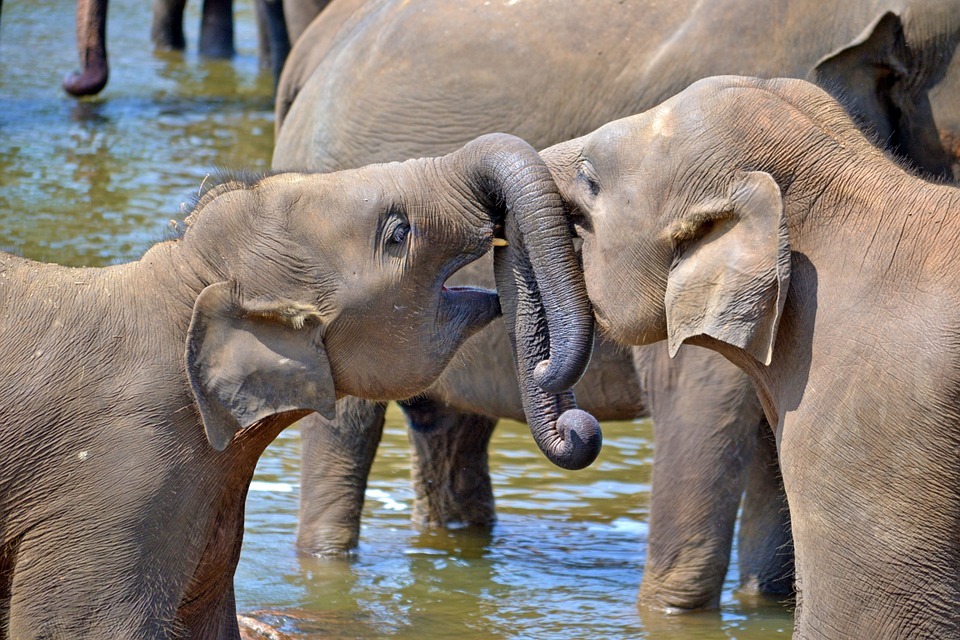Introduction
Pinnawala Elephant Orphanage is a unique destination in Sri Lanka that provides visitors with the opportunity to see elephants up close in a natural setting. The orphanage is located in the village of Pinnawala in the Kegalle district, approximately 90 km from the capital city of Colombo. Pinnawala Elephant Orphanage is the largest elephant orphanage in the world and has been a popular tourist attraction since its establishment in 1975. In this article, we will delve deeper into the history, mission, and daily operations of this unique orphanage.
The elephants of Pinnawala Elephant Orphanage
Pinnawala Elephant Orphanage is home to over 90 elephants, making it the largest captive elephant herd in the world. The majority of the elephants at the orphanage are either orphans or were rescued from the wild after being injured or separated from their herds. Visitors to the orphanage can witness the elephants in their natural habitat and learn about their daily routines.
One of the most exciting activities at the orphanage is watching the elephant feeding process. Visitors can see the baby elephants being bottle-fed by their caretakers. The orphanage also allows visitors to observe the elephants’ daily routine, which includes walking, bathing, and playing in the nearby river.
The mission of Pinnawala Elephant Orphanage
The main objectives of the Pinnawala Elephant Orphanage are to conserve the elephant population in Sri Lanka, rehabilitate orphaned and injured elephants, and educate the public about the importance of elephant conservation. The orphanage also aims to provide sustainable employment opportunities for local communities.
Conservation efforts at the orphanage include breeding programs and initiatives to protect elephant habitats in the wild. The orphanage also runs a successful rehabilitation program that has helped to reintroduce orphaned elephants back into the wild.
Visiting Pinnawala Elephant Orphanage
Visitors to the Pinnawala Elephant Orphanage can enjoy a variety of activities, including feeding the baby elephants and watching the elephant bathing ceremony. The orphanage also offers elephant rides, which allow visitors to experience the beauty of the surrounding countryside from a unique perspective.
Tourist facilities at the orphanage include a restaurant, souvenir shop, and viewing platform. The elephant bathing ceremony is a popular attraction where visitors can watch the elephants bathing in the nearby river. The ceremony is held twice daily, and visitors can witness the caretakers washing and scrubbing the elephants with coconut husks.
Criticism of Pinnawala Elephant Orphanage
Despite the many positive aspects of the Pinnawala Elephant Orphanage, the facility has also faced criticism over the years. Some of the criticisms include:
- Inadequate living conditions: Critics have raised concerns about the living conditions of the elephants at the orphanage. Some have claimed that the enclosures are too small and that the elephants lack enough space to roam and exercise.
- Overcrowding: The orphanage has also faced criticism over its large number of elephants. Some animal welfare advocates argue that the facility is overcrowded and that the elephants are not given adequate care and attention.
- Lack of medical care: There have been reports of sick and injured elephants at the orphanage not receiving adequate medical care. Critics argue that the facility needs to improve its veterinary care and treatment of sick animals.
- Captive breeding: Some critics argue that the orphanage’s captive breeding program is not ethical. They argue that it is not natural for elephants to breed in captivity and that it can lead to genetic problems and other health issues.
- Elephant rides: The orphanage has faced criticism over its elephant riding program. Some argue that riding elephants is cruel and that it can cause long-term damage to the animals’ spines and other body parts.
- Lack of transparency: The orphanage has faced criticism over its lack of transparency in how it operates. Some critics argue that the facility needs to be more open and accountable to the public about its activities and the treatment of its animals.
It is important to note that the Pinnawala Elephant Orphanage has taken steps to address some of these criticisms. For example, the facility has expanded its enclosures in recent years and has worked to improve its veterinary care and medical treatment of animals. Additionally, the orphanage has announced plans to phase out its elephant riding program in the coming years.
Conclusion
The Pinnawala Elephant Orphanage is a unique and essential institution in Sri Lanka. It has provided a home for dozens of orphaned and abandoned elephants over the years and has helped to raise awareness about the importance of elephant conservation and welfare.
While the facility has faced criticism over the years, it is important to recognize the progress that has been made in addressing some of these concerns. The orphanage’s expansion and improvement of living conditions for its animals, as well as its plans to phase out its elephant riding program, are positive steps towards ensuring that the elephants at the orphanage receive the best possible care and treatment.
Visiting the Pinnawala Elephant Orphanage can be an unforgettable experience for those interested in Sri Lankan wildlife and conservation. With its beautiful location and unique elephant inhabitants, the orphanage offers a rare opportunity to witness these majestic creatures up close and learn about the important work being done to protect them.
Read More Articles: Yang Adventure


